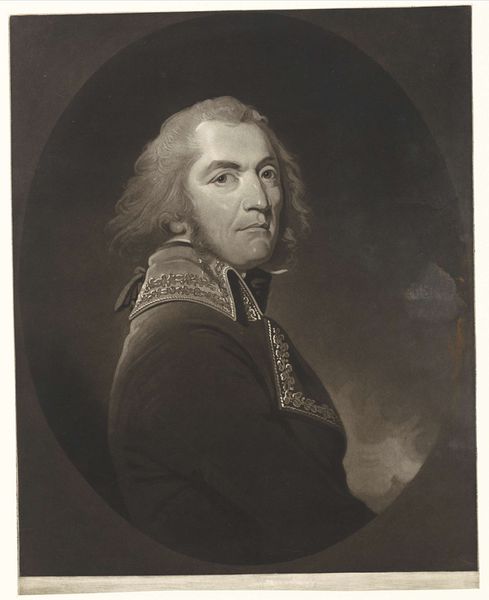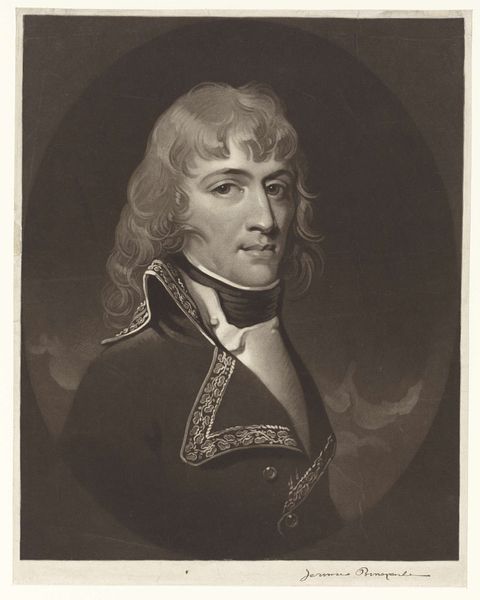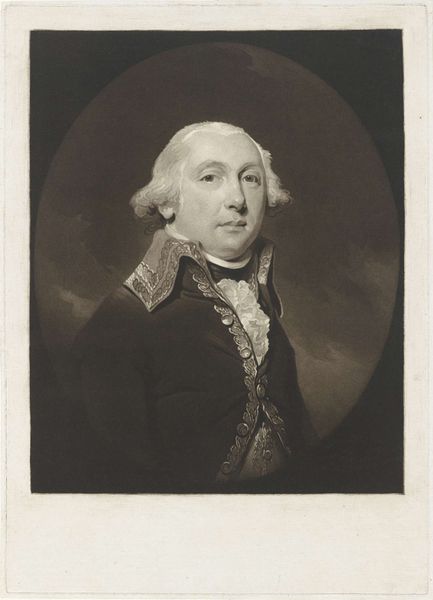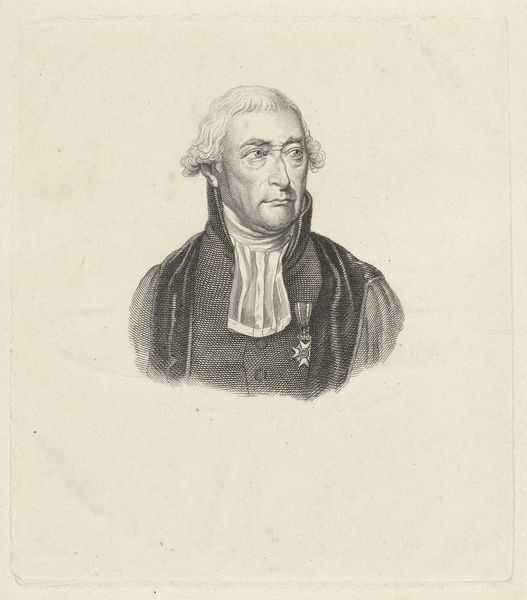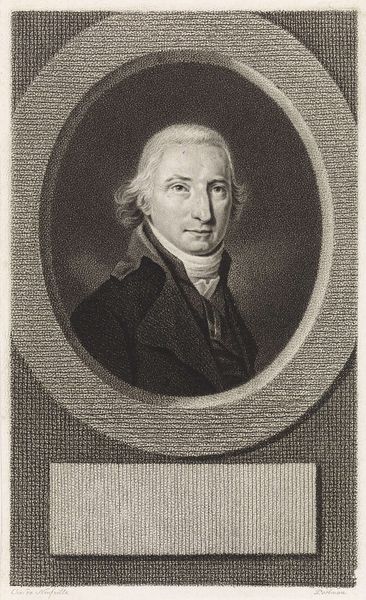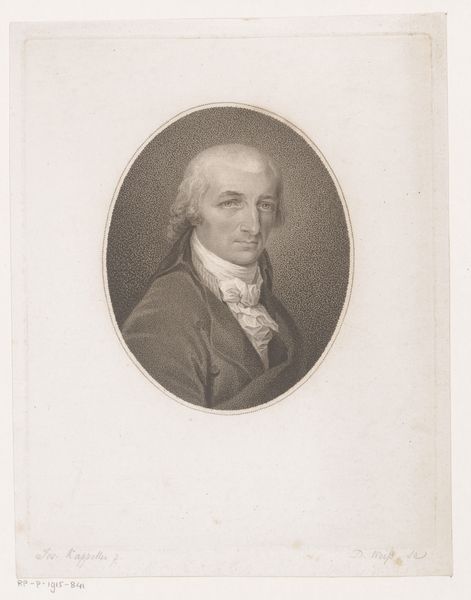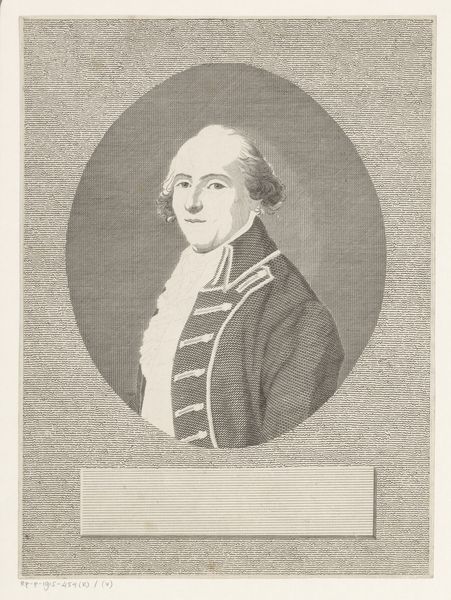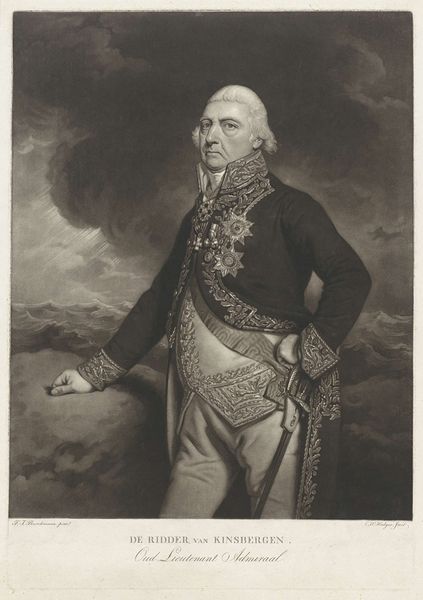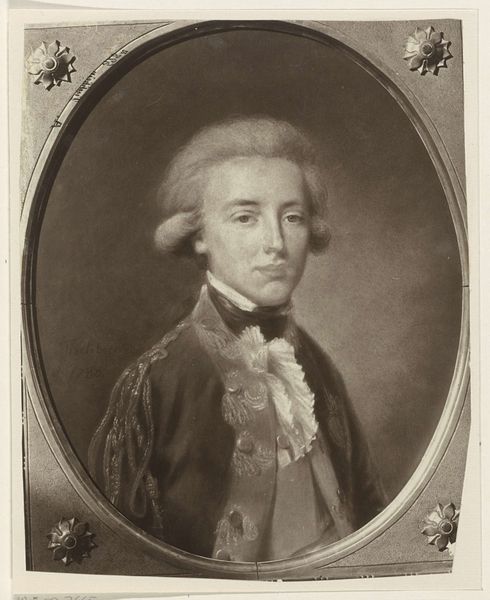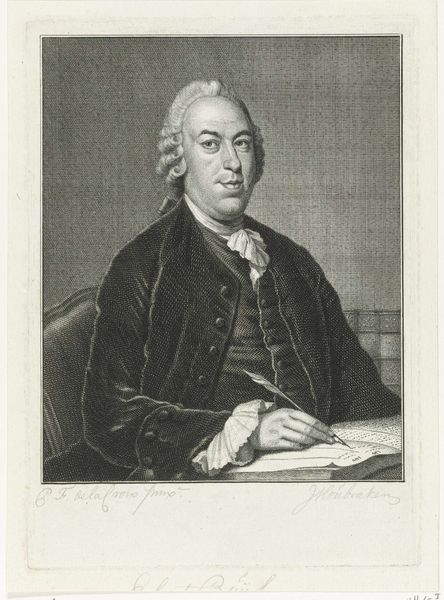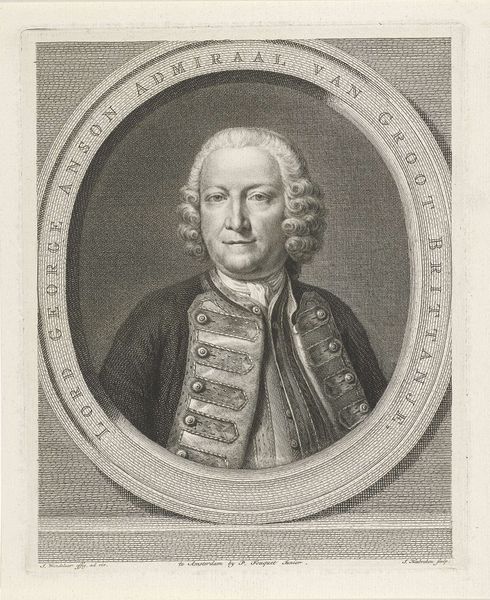
print, engraving
#
portrait
#
neoclacissism
# print
#
historical photography
#
history-painting
#
engraving
Dimensions: height 424 mm, width 309 mm
Copyright: Rijks Museum: Open Domain
Curator: Up next we have a rather striking portrait, an engraving produced in 1795 by Charles Howard Hodges, titled "Portret van Herman Willem Daendels." It is now held at the Rijksmuseum. Editor: My immediate impression is one of formal restraint, almost severe. The subject gazes directly at the viewer, a kind of uncompromising assessment in his eyes. Curator: That stern gaze is fitting. Daendels was a prominent figure in Dutch history, a general and politician during a turbulent time of revolution and reform. He would later serve as Governor-General of the Dutch East Indies. The portrait coincides with his rise to power after the Batavian Revolution. Editor: It’s interesting how Hodges employs Neoclassical style, that striving for order amidst chaos, that aspiration to classical virtues—which are all loaded symbolism that projects authority. Even the tight composition feels deliberate. But that blank void around him in the background--there’s an emptiness there that feels quite psychologically modern, especially considering the era. Curator: Absolutely, Neoclassicism was very much tied to political messaging, and Daendels was keen to promote an image of himself as a strong, decisive leader during this transitional period in Dutch history. This image was widely distributed, solidifying his profile and authority among both supporters and critics. Editor: And even the name “Daendels” evokes a feeling—Daendels embodies that transition to a more modern idea of political might-- almost tyrannical. It speaks of dominance, and it resonates in our historical and political memory, conjuring something more than what it depicts directly. Curator: I find that fascinating--how a visual symbol, a name linked to action, imprints itself on our subconscious, accumulating associations over time. Editor: It's in a way like reading an image, like encountering a glyph that encapsulates a whole network of memories and expectations. Hodges knew he was portraying not just an individual, but an emblem of shifting power. Curator: Precisely. Art can be a powerful tool, then, shaping collective identity. Viewing this portrait, considering Daendels' impact through its symbolism offers, for me, a vital way to explore our history and political thought. Editor: Indeed. And hopefully, in contemplating such images, we can recognize those reverberating chords of power echoed across eras.
Comments
No comments
Be the first to comment and join the conversation on the ultimate creative platform.

